If you’re new to golf it’s easy to be overwhelmed with all the terms, etiquette, and equipment.
Whether you’re buying a new set or adding clubs to make up your set of 14 clubs, you’ve likely asked, “Do I really need a sand wedge?”
We’re here to say 100% yes – you do need a sand wedge.
Whether you’re a professional golfer on the PGA Tour or a brand-new player, a sand wedge (referred to as SW) is one of the most important clubs in your bag.
Today we’ll review why this club is a must for every golfer, different types of sand wedges, and how to hit it consistently well.
Do I Need a Sand Wedge in Golf?
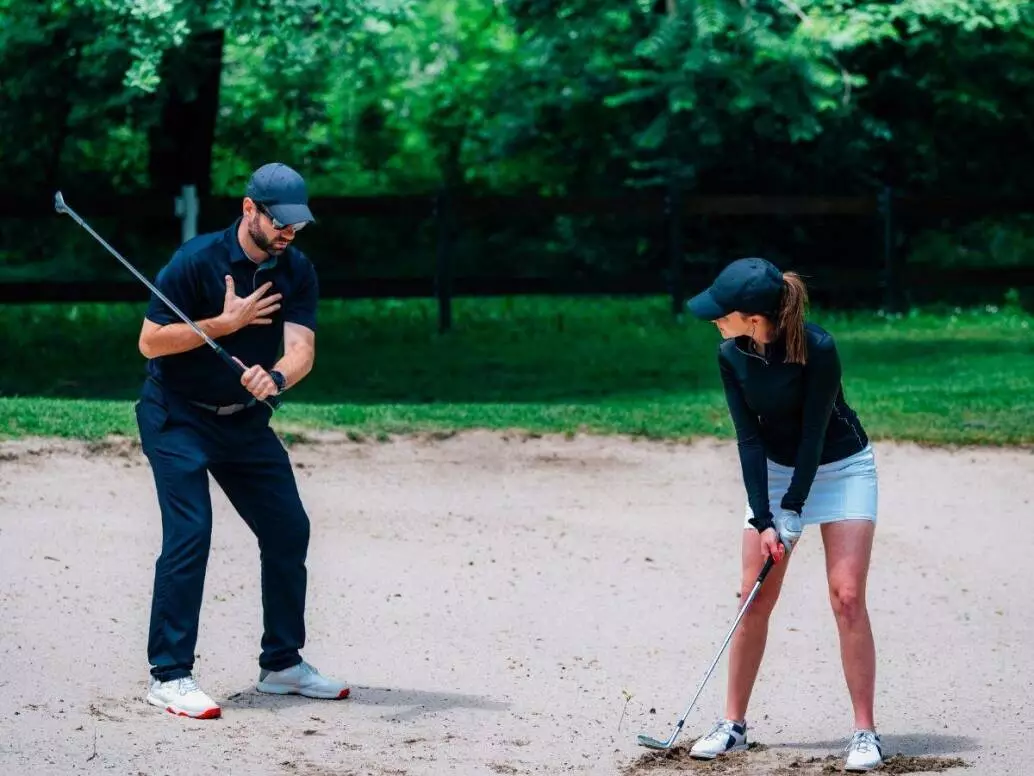
A sand wedge is a very versatile club that is used for a number of shots around the green and in bunkers.
If you find yourself in a bunker, then your sand wedge can be used to get you out of trouble quickly too. It can also be used for chip shots and pitch shots when you need to stop the ball quickly.
There are four types of wedges in golf including: pitching wedge (PW), gap wedge (GW), sand wedge (SW), and lob wedge (LW).
Each club has its own uses on the golf course to hit a variety of shots. A pitching wedge has the least amount of loft while the lob wedge has the most amount.
Let’s get into the sand wedge design before sharing the most commonly used methods to use this golf club.
Sand Wedge Design (Loft and Length)
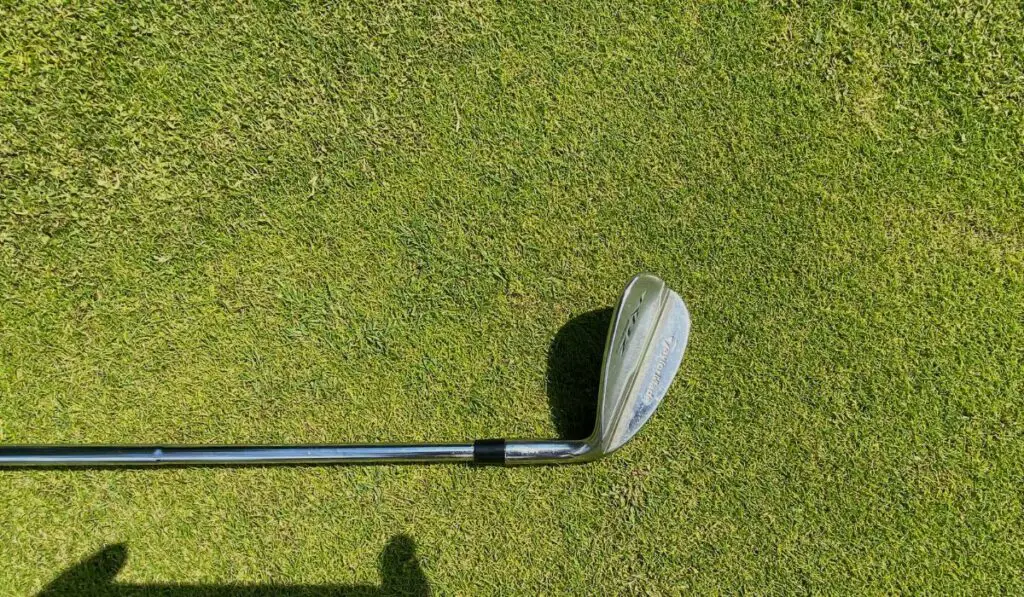
A sand wedge typically has 54-56° of loft, which is much more than your standard pitching wedge (which is between 43-48 degrees).
This usually leaves 10–12 degrees between your PW and SW which is where a gap wedge comes into play (as it fills the “gap” between wedges).
Which loft you choose for your sand wedge – 54 or 56 – is a personal choice. Some golfers prefer to have a higher lofted sand wedge as they find it easier to get the ball out of the bunker.
If you struggle with getting the ball airborne, then a higher lofted sand wedge could be the answer.
Sand wedges are also shorter golf clubs that are nearly the same length as a putter. This makes them easy to control compared to longer clubs like your irons or woods.
Why You Need a Sand Wedge
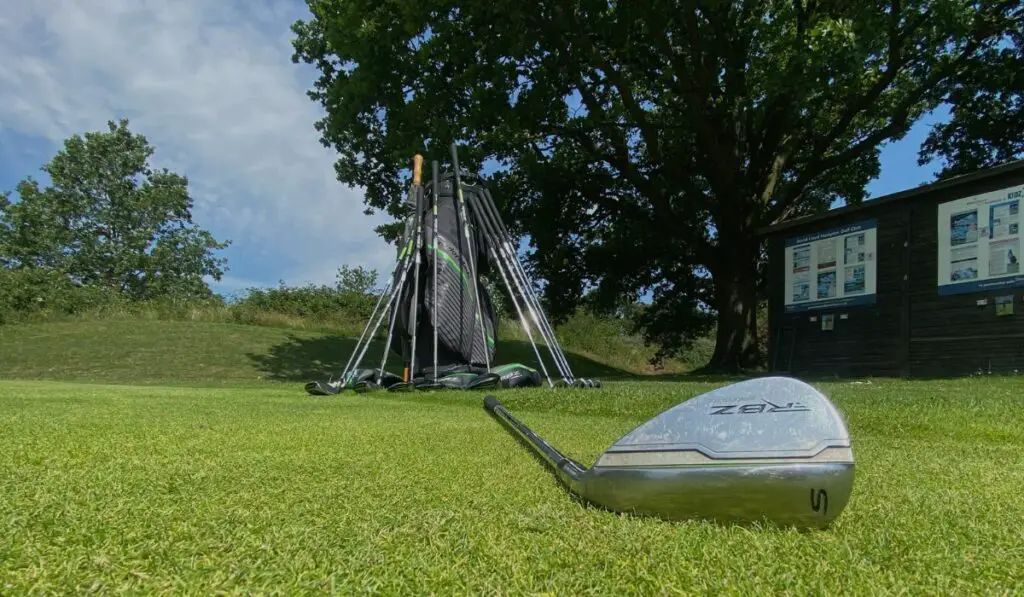
So many new golfers ask, are sand wedges only for bunkers?
As a beginner golfer, I thought the same thing. I was predominantly using my pitching wedge for shots around the green and it wasn’t until I started to play more that I realized how a sand wedge can make some shots so much easier.
The extra loft makes it a lot easier to hit shots higher than a pitching or gap wedge. When you play a shot with a sand wedge, the ball will stop quicker than it would with any other club.
The design also helped create more spin and end up saving a lot of shots around the green.
Sand Wedge Shots
Now that you understand what a sand wedge is, let’s review the most common shots.
Approach Shots
The first way to use a sand wedge is with your approach shots into greens. Most golfers hit their SW between 70–110 yards, depending on swing mechanics and clubhead speed.
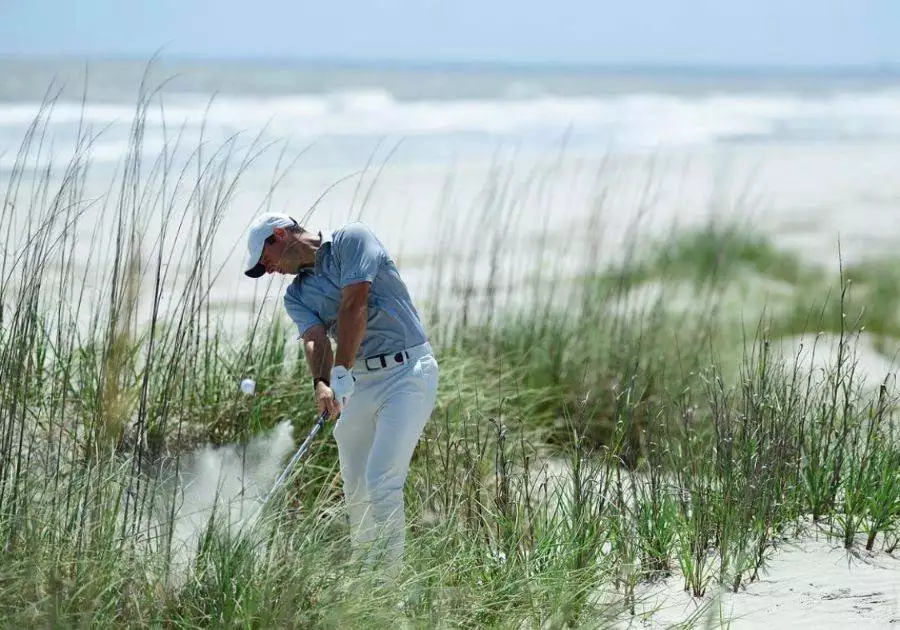
Beginner golfers will usually hit it 70–90 yards while more experienced players will hit it 90 or more yards. Since the club has so much loft it has a high trajectory and stops quickly on the greens.
This makes it a great club to use for full swing approach shots into par 4s and par 5s (or short par 3s). It’s also great for shorter approach shots (less than 70 yards) as you can choke up and take a ¾ or ½ swing to control the distance much easier than a pitching wedge.
I find it easier to hit a full swing sand wedge shot than to try and hit a half shot with my pitching wedge. That’s why I use a sand wedge for most of my shorter approach shots.
Around the Green (Chipping/Pitching)
Sand wedges are also a great club choice for shots around the green. Using a sand wedge allows you to put the ball very close to the pin and spin much more than PW or GW.

I generally use my sand wedge for most of my chip shots around the green, as it gives me the most control and accuracy. The lob wedge and gap wedge are other clubs that you could use for chipping.
Greenside Bunkers
Finally, as the name suggests this club is great to help you escape from the sand. Thanks to the high loft and bounce, it’s much easier to hit out of the bunker than a pitching or gap wedge.
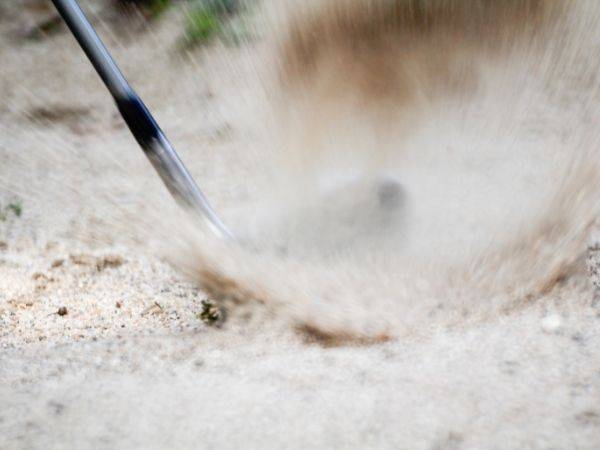
The key to getting out of the bunkers in one shot is to open the face. This helps get the ball to launch higher and avoid hitting the lip. Plus, make sure to swing with plenty of speed and hit behind the ball as sand is very heavy.
Bunker shots are not particularly easy but once you master the technique, you will be able to get the ball close to the hole more often than not.
How to Hit an Explosion Bunker Shot
This is probably the most popular technique for hitting a sand shot. It is also known as an explosion shot.
To hit this shot, you need to open the face of the sand wedge and take a big swing. The goal is to hit well behind the ball (roughly 1–2 inches) so you hit the sand, which carries the ball out of the bunker.
You’ll also want to:
- Choke up on the club.
- Take a wider than normal stance.
- Have slightly more weight on your front foot.
- Keep your lower body stable so you don’t sway.
These tips should help you get out of the bunker on your first shot.
Know Your Distances
To make the most of this club and any wedge you need to understand your distances. Knowing the distances of your lob wedge, sand, and gap wedge as well as other clubs in your bag is key to playing well.

You should know how far you hit each club so that you can make the correct club selection. For example, a 60-degree lob wedge will not travel as far as a 56-degree sand wedge.
I can hit a sand wedge between 80 and 100 yards but only hit a lob wedge 60–75 yards. On the driving range figure out how far you hit each club so you’re prepared on the golf course.
Common Questions
As you can tell a sand wedge is a great golf club that has a lot of uses on the course. Let’s answer a few common questions to help you better understand this club.
What is the difference between a pitching wedge and sand wedge?
A pitching wedge has less loft than a sand wedge and slightly longer shaft. This means a PW will launch lower and go further than a SW (but still has a high trajectory).
Pitching wedges are not ideal for most sand shots as they don’t have enough loft to get the ball out of the bunker and onto the green. They also don’t spin as much and therefore travel further after landing on the green.
Pitching wedges are better suited for long approach shots and greenside chips while sand wedges are better for shorter approach shots and escaping bunkers.
What’s the difference between an approach wedge vs. sand wedge?
An approach wedge, referred to as a gap wedge, has less loft than a sand wedge. A gap wedge goes longer and has a lower trajectory than a sand wedge.
Should I use a sand wedge on the fairway?
Yes, a sand wedge works from the fairway, rough, or bunkers. The high loft makes it easy to hit from nearly any type of lie.
Should I buy a used sand wedge?
If you don’t have a sand wedge golf club, a used one is better than nothing. But it’s better to buy a new sand wedge as the grooves are fresh and help produce spin.
Some of the best sand wedges include Titleist Vokey, Cleveland, TaylorMade, and Callaway.
Can I play without a sand wedge?
Yes, but it’s not recommended. For the average player, it is much easier to get up and down from around the green with a sand wedge.
If you don’t carry one you’ll likely have some big distance gaps on full shots. Plus, a lot of shots around the green are much more challenging too.
The bounce on a sand wedge is specifically designed to help the club glide through the sand and prevent it from digging too deep. This makes it much easier to get the ball out of a bunker and onto the green.
While you can get by without carrying a sand wedge, I would recommend having one in your bag. It will make it much easier to hit shots around the green and will help you to lower your score.
Closing Thoughts
So, do you really need a sand wedge in your golf bag?
The answer is yes – having one will make it much easier to hit full approach shots, ones around the green and from bunkers. Most sets will include a pitching wedge and sand wedge but you might need to buy your SW separately.
Once you have a PW and SW you like, it’s also a good idea to consider a gap wedge and lob wedge too. Most players can benefit more from a gap wedge and lob wedge is typically reserved for more consistent, experienced golfers.
Make sure to spend plenty of time working with your SW at the chipping green to get comfortable hitting different shots.
Once you learn how to use it properly it’ll act like a weapon on the golf course. For your reference, here are the three wedges I carry in my bag – 52° gap wedge, 56° sand wedge, and 60° wedge.
Do you use a sand wedge or lob wedge more often?


